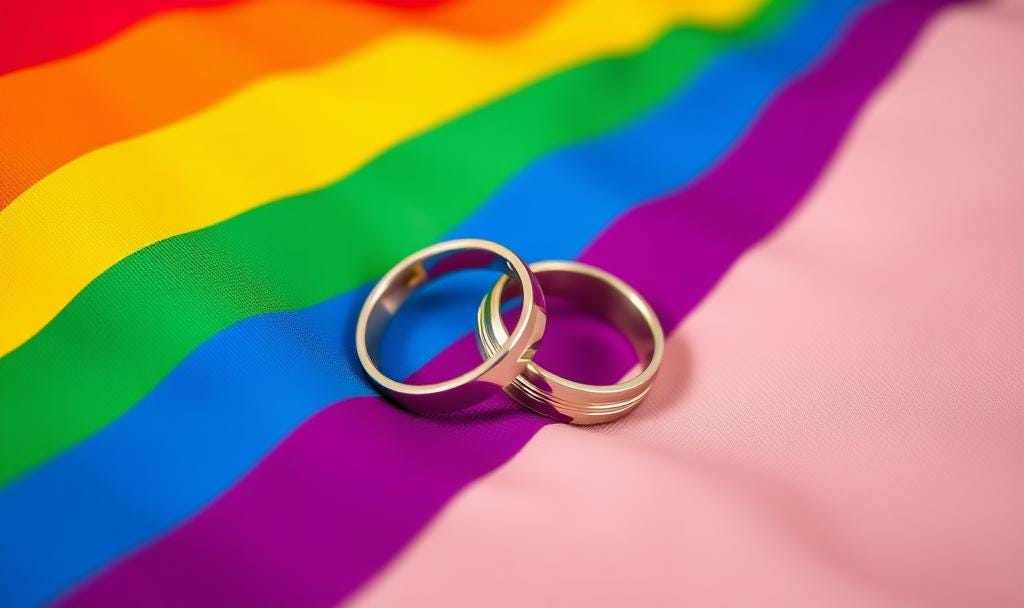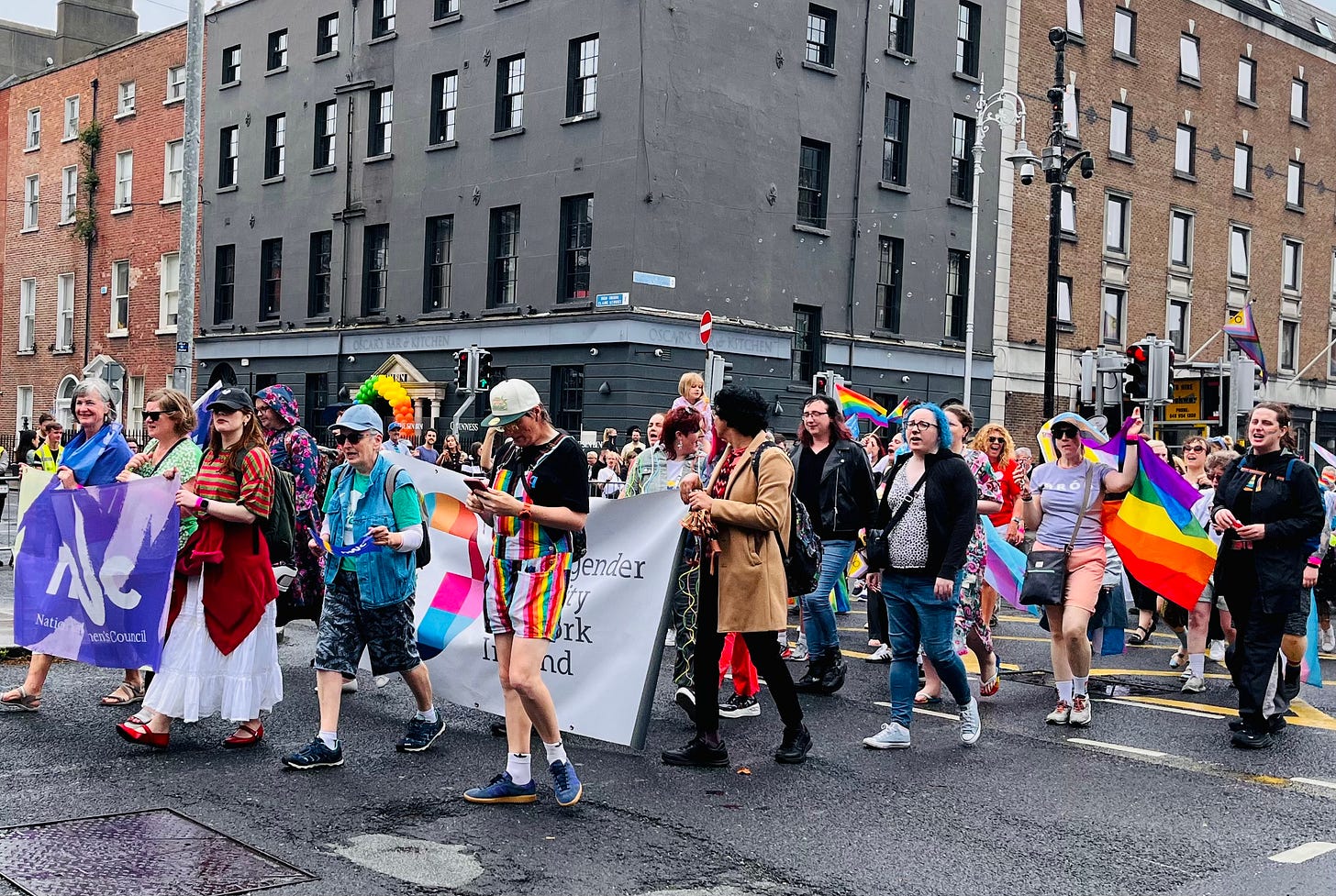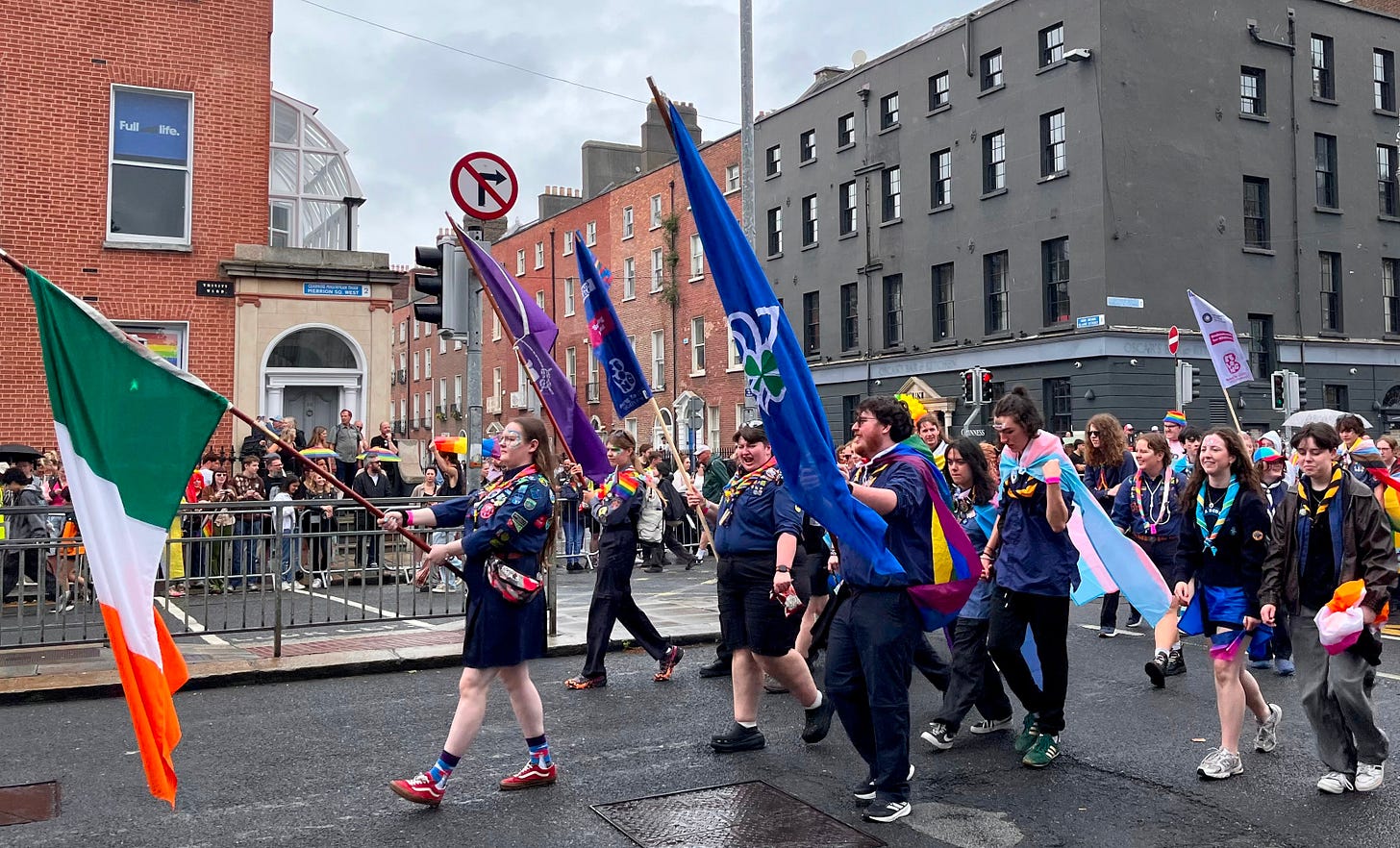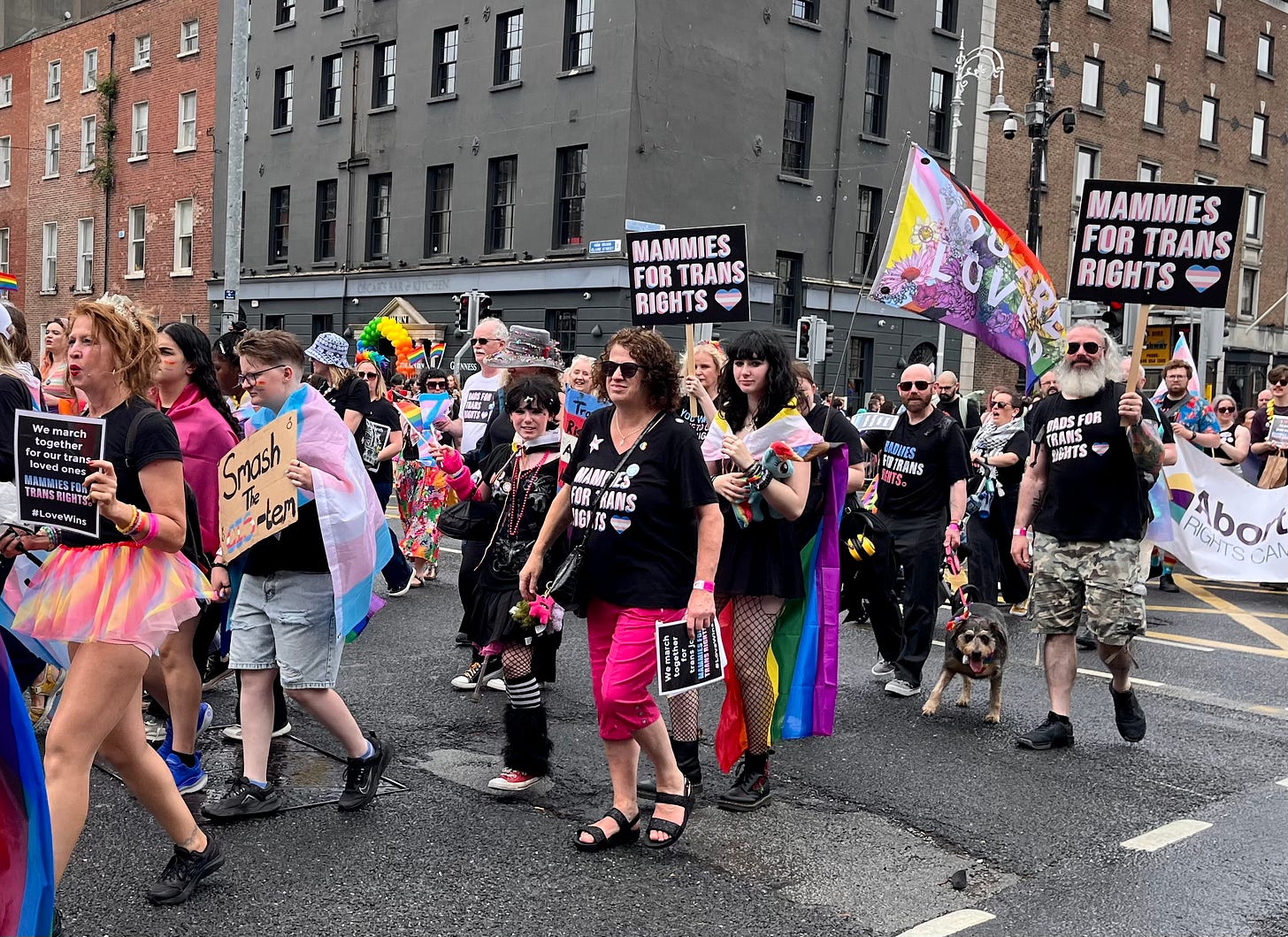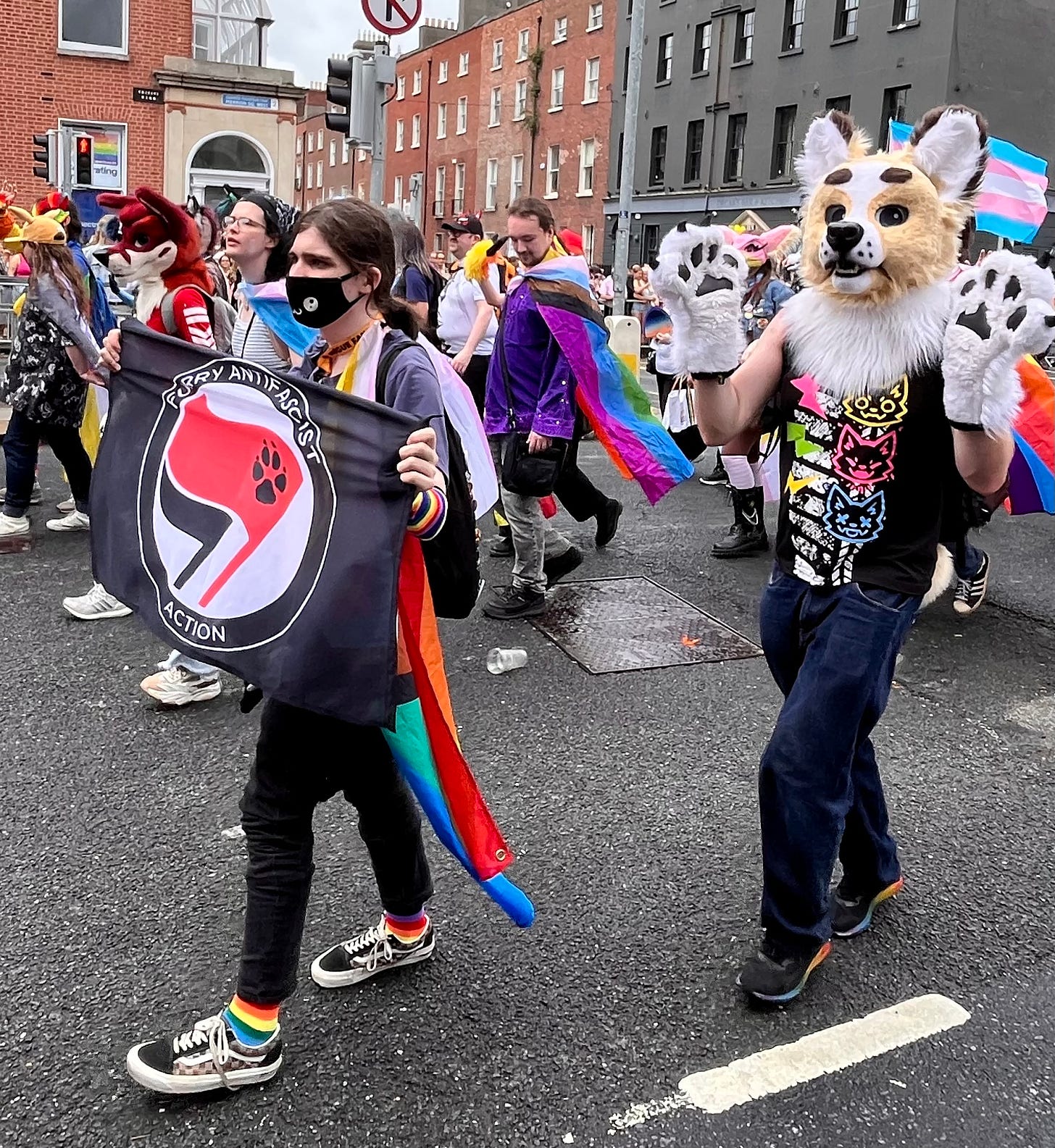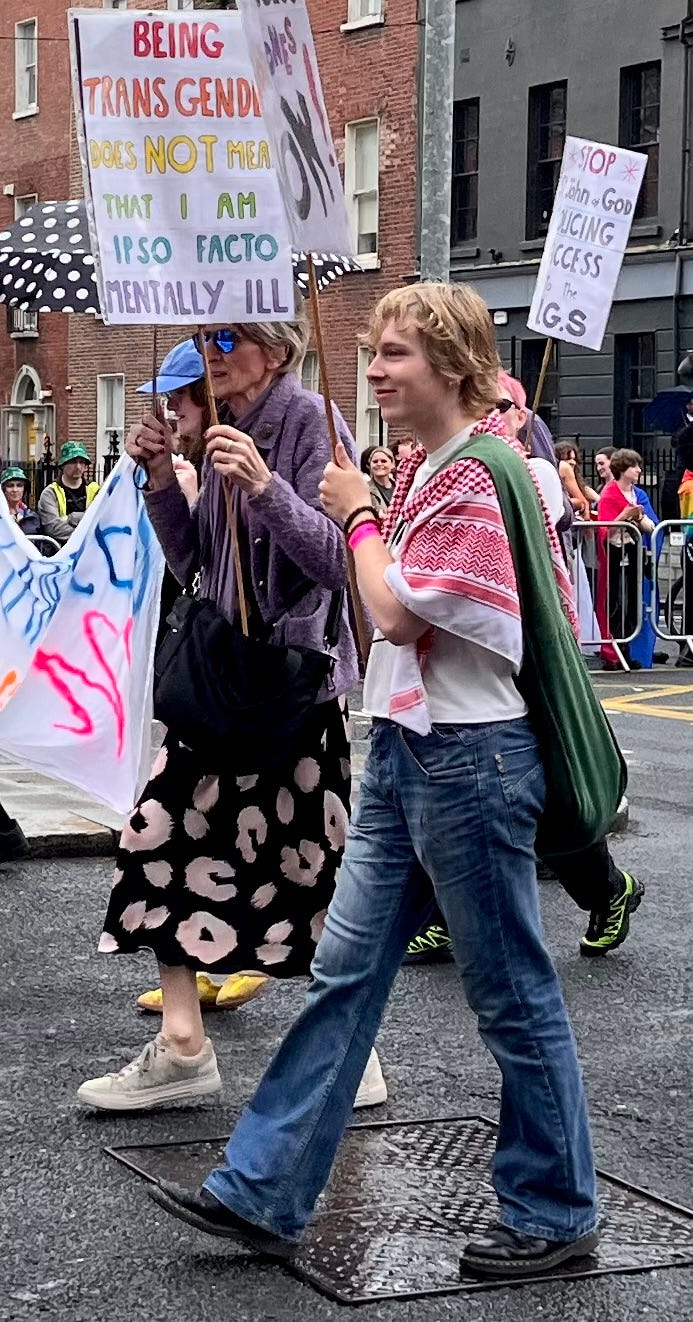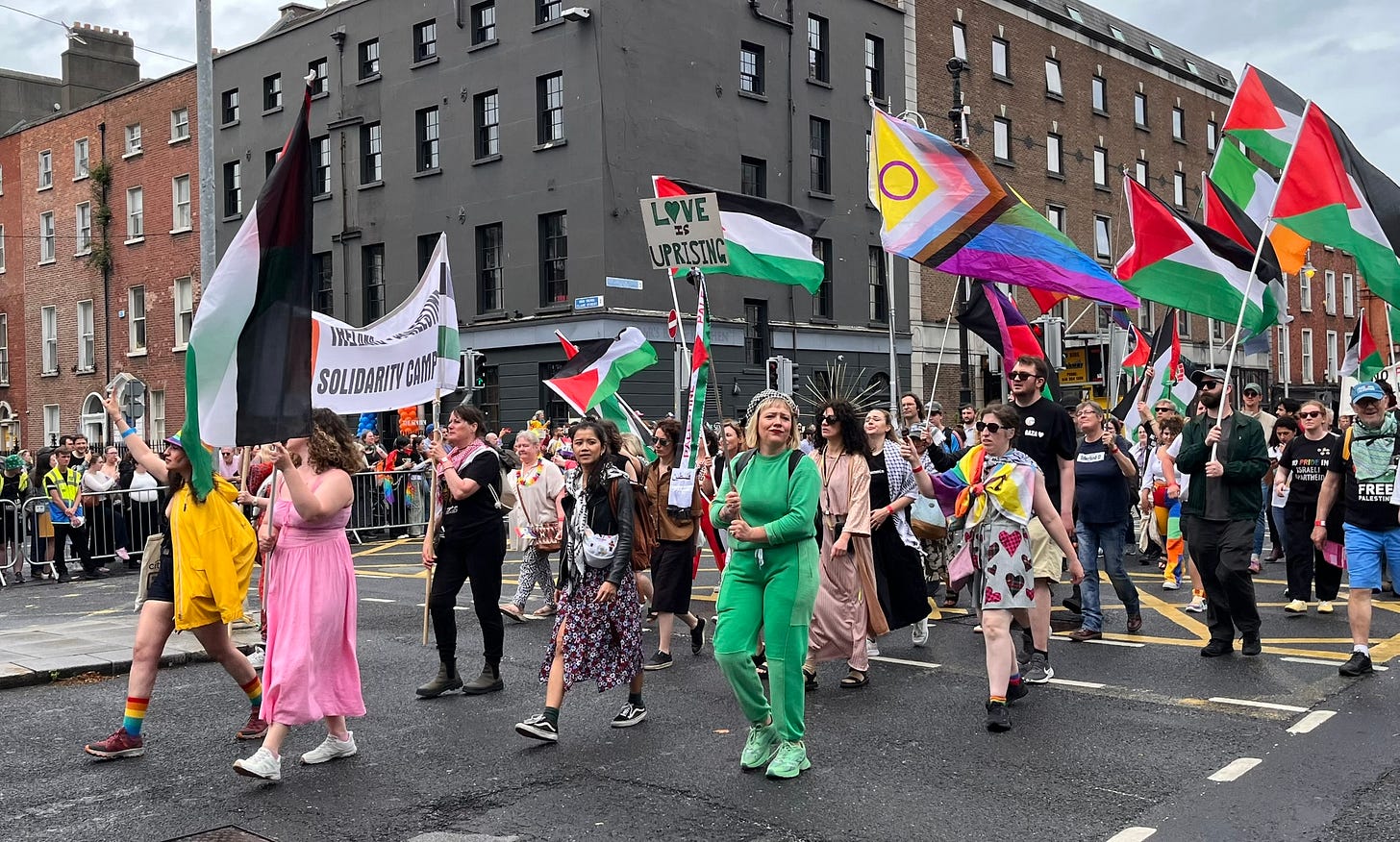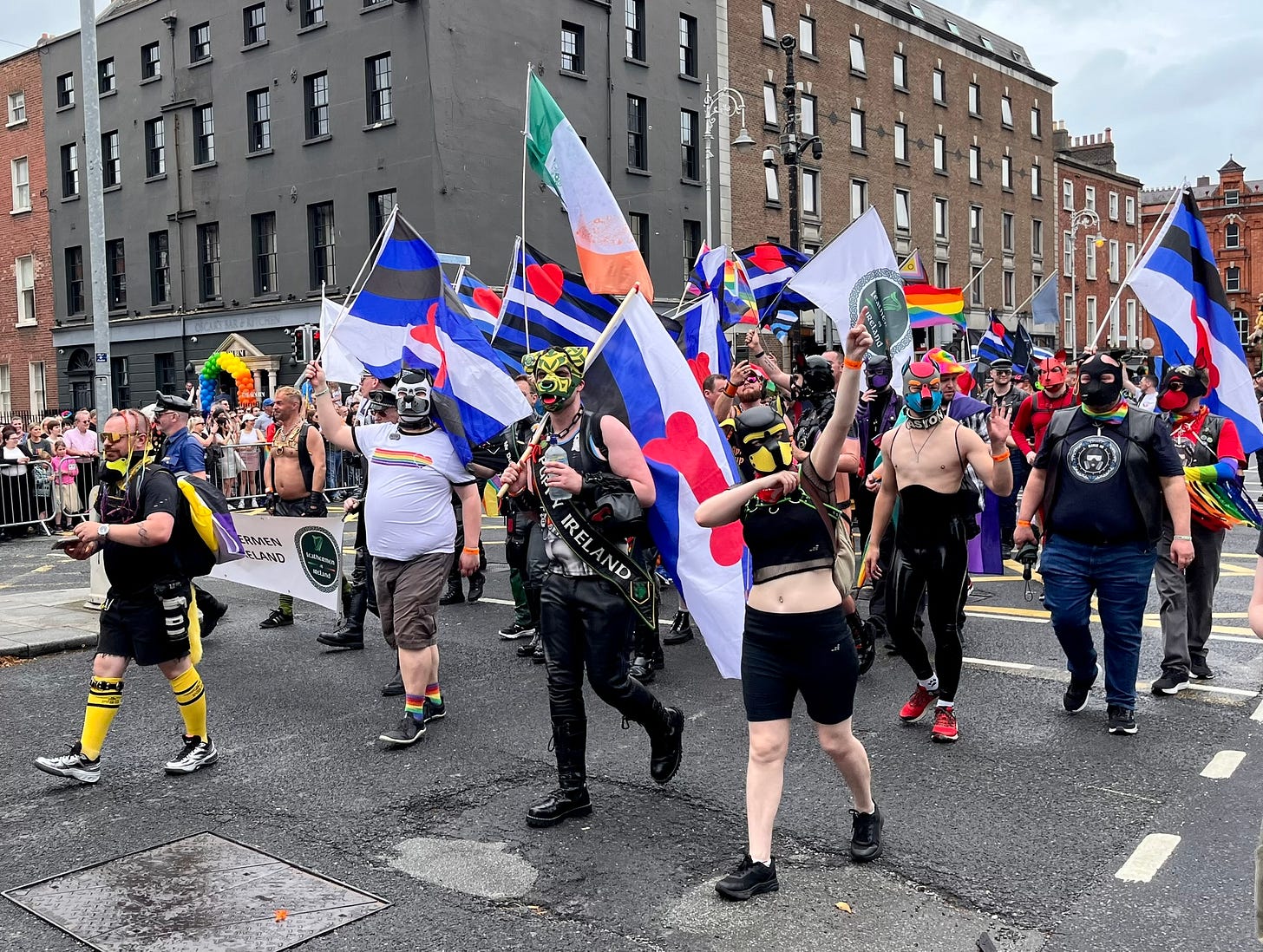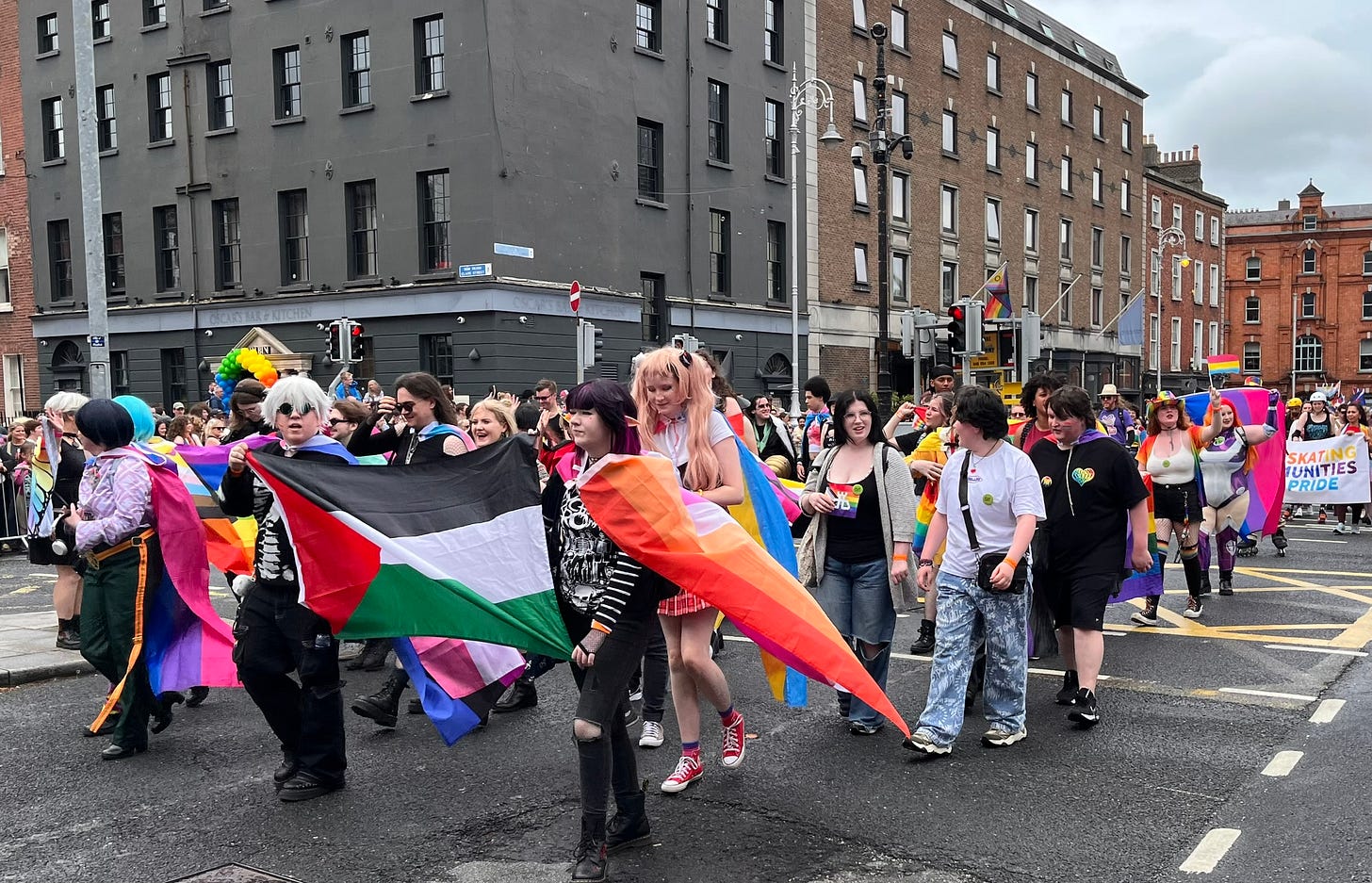Last weekend I ventured into Dublin for the annual Pride parade. The last time I attended was six years ago, in 2019, and things have changed since then. It felt like less of a party, more of a protest and an opportunity to make demands, despite the fact that Ireland is among the most progressive countries in the world when it comes to LGBTQ+ rights.
My first stop on arriving in town was the ladies’ toilets in Busaras, Dublin’s central bus station, where I encountered a large man in a dress. As an actual woman, whether this was ok with me or not is largely irrelevant because we have self ID in Ireland meaning a man can call himself a woman if he wants to and he’s legally entitled to use facilities or services for women. Whether or not he has the legal paperwork (easily obtained online) is also largely irrelevant as it’s not considered appropriate or lawful to ask to see it.
I headed to O’Connell St, where the parade starts. It was a hive of activity with preparation in full swing. Within minutes I was being hassled by a middle-aged man because I (politely) declined to accept his flyer about Palestine. But why wouldn’t I take it? he demanded to know. Did I not agree with it? I told him I was in the middle of trying to take a photo. He said I should take it to read later. I said I didn’t have a bag to put it into. He asked why couldn’t I just read it and then throw it on the street? I said I didn’t want to litter. Nothing would satisfy him.
I wandered down towards Grafton St to get myself a coffee and on payment was asked to include a donation to a Palestine fund raiser. This was beginning to feel like a two-causes-for-the-price-of-one event and as the day wore on that proved to be the case. I had my coffee and enjoyed the people-watching, more colourful and entertaining than on an average Saturday in Dublin. There were lots of same sex couples just being themselves, holding hands and having the odd kiss - no big deal. I love to see it, not just on Pride day but on any day, because I’m grateful and proud to live in a country where same sex relationships are viewed no differently to heterosexual relationships. We all have the same rights. Love is love, after all.
In the Beginning
The origins of the Pride movement can be traced back to New York City, June 1969. Police raided the Stonewall Inn, a gay bar in Greenwich Village, sparking a spontaneous and powerful uprising among the lesbian and gay rights community. Tired of persistent discrimination and police harassment, patrons and activists fought back in what became known as the Stonewall Riots. These protests lasted several days and marked a turning point in the lesbian and gay rights movement in the US and around the world. In June 1970, on the first anniversary of the riots, the first Pride marches were held in New York, Los Angeles, and Chicago, beginning an annual tradition of celebration, visibility, and continued advocacy for equality.
Ireland’s first Pride parade was in 1983 and it was both celebration and protest. The trigger for an initial demonstration was the tragic murder of Declan Flynn, a young gay man who was killed in a homophobic attack in a public park in Dublin. The lenient sentencing of his attackers sparked outrage and galvanized Ireland’s lesbian and gay community. In March 1983, hundreds marched from Liberty Hall to Fairview Park in a demonstration that is widely regarded as Dublin’s first Pride event. The official Pride Parade, as a more visible celebration, began later that same year in June. Early parades were modest in size and faced some public and political resistance, reflecting Ireland’s conservative attitudes at the time. However, over the decades, Dublin Pride has grown into one of the country’s largest annual events.
Progress in Ireland
The progression of gay rights in Ireland has been significant over the past few decades. Homosexuality was decriminalised in 1993, following a long campaign led by activists such as David Norris and a ruling from the European Court of Human Rights. In 2010, civil partnerships were introduced, granting same-sex couples legal recognition and some of the rights of marriage. This was followed by a landmark moment in 2015, when Ireland became the first country in the world to legalise same-sex marriage by popular vote. The referendum passed with over 62% support, marking a dramatic shift in public attitudes.
Introduced alongside same-sex marriage, but very much on the down-low, was the Gender Recognition Act (GRA). This legislation allows individuals to legally change their sex and have it fully recognized for all legal purposes, including on birth certificates and official documents. Anyone aged 18 and over can declare a change of sex without the need for medical assessment, diagnosis, or intervention of any kind. This is known as “self ID”. Applicants simply fill out a form online and submit a statutory declaration. They are then issued a Gender Recognition Certificate (GRC) and their new gender is legally recognised as their preferred gender for all purposes. Ireland was one of the first countries to adopt this approach of self declaration and it is seen as highly progressive.
All in all, Ireland is ahead of the game when it comes to LGBTQ+ rights.
Back to the Present
After my coffee I wandered over to Merrion Square where the parade concludes. The last time I attended the parade this was where I watched from and it was a great spot. There were colourful floats with the requisite drag queens and music and dancing, marching bands, the guards, the postal service, the fire brigade, etc. Not so this time. Perhaps not everyone made it to the end? Footage from O’Connell St showed a more Mardi Gras atmosphere and maybe the experience would have been different there. The parade that arrived in at my end of town felt less like a celebration and more like a moan about trans rights (exactly which rights remains unclear) combined with a pro-Palestine protest, with a few furries thrown in for good measure. It was as though most of the fun crowd had dropped out and gone to another party (apart from Dublin Front Runners, a running club who seemed to be having a blast!).
Leading the way was our Taoiseach, Micheál Martin, accompanied by Philippa Ryder, transgender activist, civil servant, and Chair of the Dublin Pride Board. Philippa, formerly Phillip, can be seen below discussing the tactics used to bring in self ID in Ireland. Presumably, Micheál Martin is ok with this and with the fact that there was no consultation with Irish women’s groups about the impact self ID would have on women’s rights, or with child safeguarding organisations about the impact it would have on children.
But back to the parade. There followed a procession of representatives from various groups and organisations. Despite it being the 10 year anniversary of the legalisation of same sex marriage I didn’t see any mention or celebration of that, or of the GRA for that matter - one would imagine that the trans rights activists would be celebrating it.
There was the National Women’s Council of Ireland marching alongside TENI (Transgender Equality Network Ireland), purveyors of advice and ideas that contradict all current medical and scientific research (to children).
Then came the Scouts, a youth organisation, displaying their allegiance to gender ideology.
They were followed by the mammies who support transitioning children.
People Before Profit are all about the QT+.
The Irish Furries, who (thank goodness!) are fighting fascism.
Then there were the puppies and the guys who like leather. At least they seemed to be enjoying their day out.
Has Pride Passed Its Use-By Date?
Ireland is by any standards a liberal country. People who identify as transgender have all of the same rights as everybody else, and yet there was a real air of discontent among those marching ostensibly for trans rights. I saw little celebration of lesbian, gay, and bisexual life and the great progress Ireland has made in the past few decades. Dublin Pride, as far as I could see, has become mostly about the T for Trans and a demand for blind allegiance to gender ideology no matter the harm it causes to vulnerable children, young people, and women. It seems to have shifted from a celebration of diversity and equality to a platform demanding ideological conformity on a range of issues, one which pushes contested beliefs and does not tolerate dissent. What was once a movement for inclusion risks becoming one of exclusion, not based on who you are but on what you think. The parade in Dublin was certainly not inclusive of all those who are liberal, left-leaning traditional supporters of gay rights and same-sex marriage and who also want to protect women’s spaces and safeguard children and young people.
Is this what happens when a cause goes on past its prime or fails to evolve? We’re living in a time of polarised views and hot takes, where critical thinking isn’t encouraged or valued and it’s easy to just jump on the next bandwagon. People, especially young people, want to belong. Social media offers them endless soundbites and superficial knowledge about many issues; the algorithms then keep them in their echo chambers. It would be lazy to blame this on the young, though. There are many well-intentioned adults supporting the cause. Some are ignorant or naïve and some think it’s just a fad that will blow over. Others see it for what it is - a belief - but are afraid of losing friends, jobs, or worse - their children - if they speak out.
Maybe it’s time to take back some pride in being the adults in the room? Adults would say no to practices that harm children and young people who are not old enough to consent, and no to men in women’s spaces and sport.
Dublin Pride 2025 in Pictures
Catherine Monaghan, Irish women’s rights activist and founding member of Wicklow Women 4 Women.
Genspect publishes a variety of authors with different perspectives. Any opinions expressed in this article are the author’s and do not necessarily reflect Genspect’s official position. For more on Genspect, visit our FAQs.







